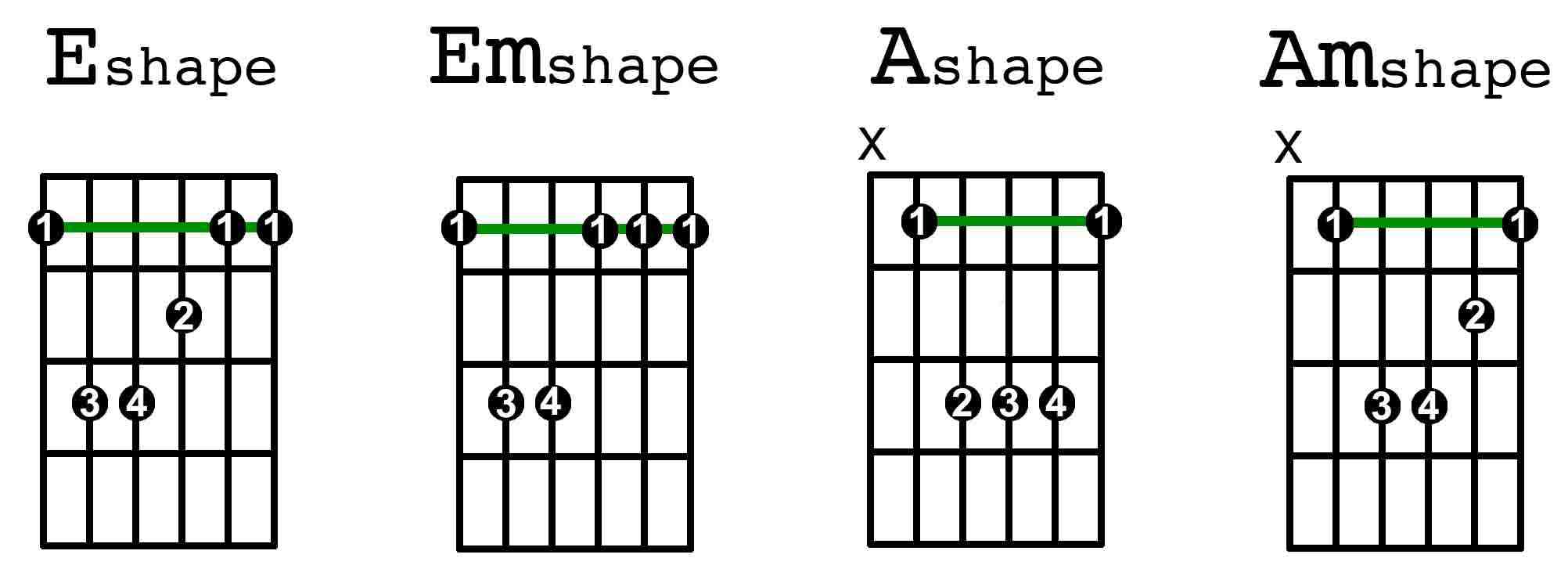|
|
Post by minorkey on Aug 19, 2014 12:41:24 GMT -5
Im a slacker when it comes to guitar. Know a few chords but I keep hearing I need some barre chords. Get up the neck. Where to start?
|
|
|
|
Post by earleg on Aug 20, 2014 0:23:32 GMT -5
|
|
|
|
Post by JamesP on Aug 20, 2014 6:53:22 GMT -5
Barre chords should be considered as "open" chords played at different places on the neck. You only need to know the "root" of the chord and from that you will learn how to locate the barre chord appropriately. Then just knowing the shapes will suffice. I found it was relatively easy to learn barre chords by taking just one key and master that up and down the neck. There are four shapes that are most commonly used.  The E major shape barre chord indicates a barre with an E major (shape) chord played with your middle, ring and pinky. When you start the E major shape barre chord starting on the first fret you’re actually playing an F major chord. The lowest note which you press with your index finger on the sixth string, first fret is the F note, which is also the root note of your chord. This root note defines the name of your chord. Now if you move up the entire E major shape barre chord a half step (1 fret), you’re playing a F# major chord, because your lowest note (the root note) is now on the sixth string, second fret, which is an F# note. If you don’t know all the notes on the strings check out “Learn the guitar fingerboard thoroughly in 16 days”. As you can see, you can move up the E major shape barre chord all across the fretboard. Let’s give you another example, if you move up the entire E major shape barre chord another half step (starting with your index finger on the third fret) you get a G major chord. Move up next is G#, A, A#, B, C, D, D#, E and finally back to F on the 13th fret. So you can play each shape barre chord in twelve different keys. You can also do this with the other chord shapes. The second chord diagram, the Em chord shape is actually an Fm (F minor) chord. The third chord diagram is an A# major chord (or Bb). The fourth chord diagram is A#m (or Bbm). If you take the third diagram “the A major shape barre chord” you can see the lowest note (the root note) is now on the fifth string, first fret and not on the sixth string because that string is muted. The root note is an A# note so you’re playing an A# chord (or Bb). Move the entire chord up a half step (1 fret) you get “B”, move up another half step “C”, etc. You get the picture. Hope this helps. |
|
|
|
Post by minorkey on Aug 20, 2014 17:16:20 GMT -5
Thanks guys!
|
|